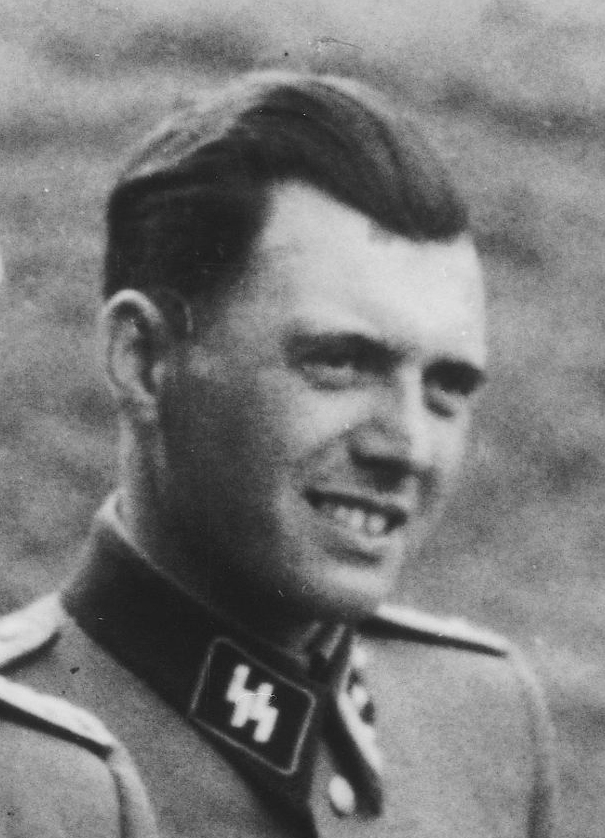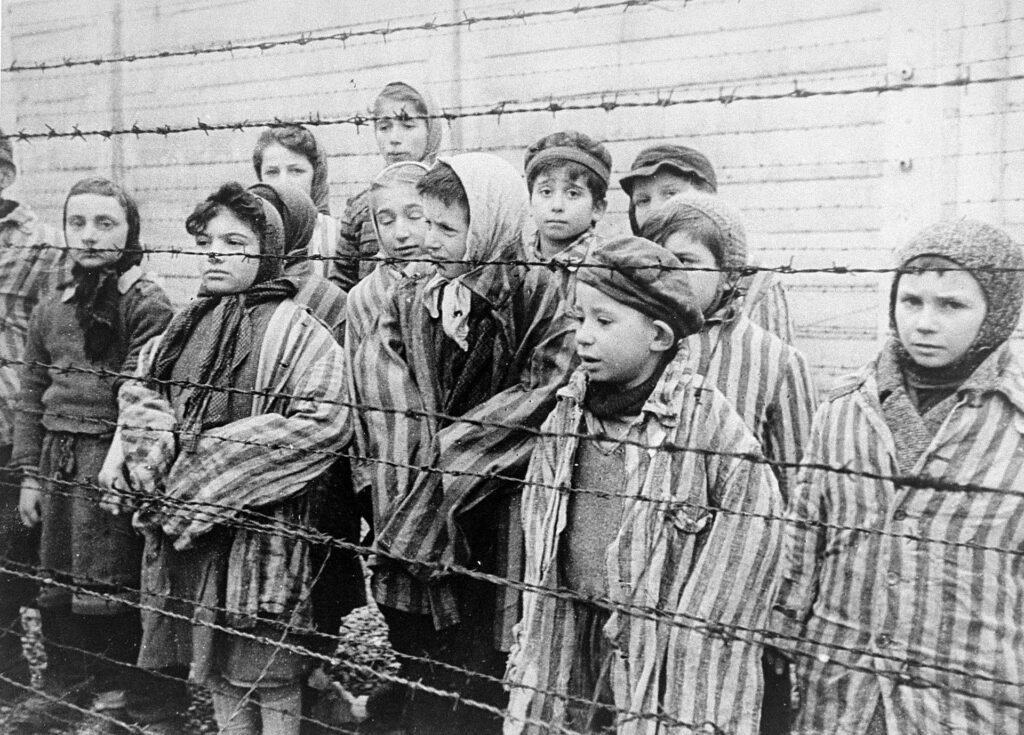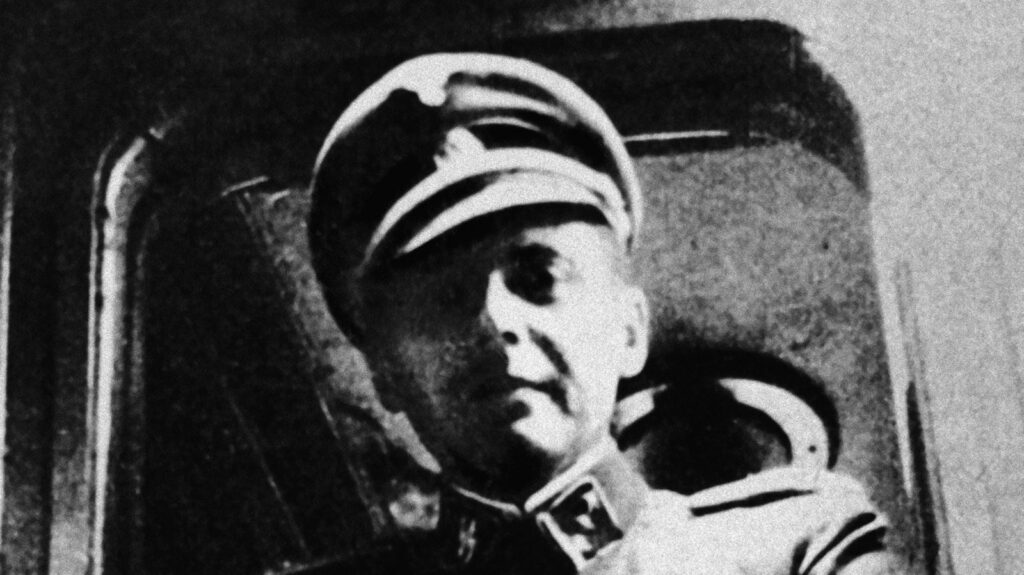The Holocaust was one of the darkest periods in human history, characterized by unspeakable atrocities committed by the Nazi regime against Jews and other marginalized groups. The core of this brutal campaign was the Nazis’ infamous concentration and extermination camps, where prisoners were subjected to unimaginable horrors in the name of racial purity and ideological fervor.
One of the worst examples of these atrocities is the camp at Auschwitz, where one man, in particular, stands out as a symbol of the horrors committed there: Josef Mengele, otherwise known as the “Angel of Death.”
As a physician and SS officer, Mengele was responsible for not only choosing who would live or die but also for conducting a series of horrific, unspeakable medical experiments on prisoners, often with deadly consequences for his own personal research.
Who was Josef Mengele, and what drove him to commit such heinous acts? Was he simply a product of his time, a man caught up in the fervor of Nazi ideology? Or was there something darker and more sinister at work within him?
His horrific experiments and the sheer scale of the Holocaust force us to confront the crimes and the consequences of unchecked power. And undoubtedly, it’s crucial to understand the motives, methods, and ethical implications of Josef Mengele – a man whose name is now synonymous with evil, and whose story is a stark reminder of the darkest aspects of human nature.

Upbringing and Education
Josef Mengele’s upbringing and education are important in understanding his later actions during World War II. Born on March 16, 1911, in Günzburg, Germany, Mengele was the eldest son of Karl Mengele.
His father was a successful businessman, running a company that manufactured farming equipment. As a young child, Mengele was also successful in his own endeavors – he was a great student and had a variety of interests, including music, art, and skiing.
After high school, Mengele moved to Munich to study philosophy before attending the University of Bonn, where he took his medical preliminary examination. In 1935, he completed his Ph.D. in physical anthropology at the University of Munich.
While he may have been a gifted and intelligent young man, during this time Mengele was completing his work in medicine, he began to fall under the influence of the nascent Nazi racial ideology.
The year prior, in 1937, Mengele started working at the Institute for Hereditary Biology and Racial Hygiene in Frankfurt under Dr. Otmar von Verschuer, a renowned geneticist famous for his research on twins. At the institute, Mengele completed another doctorate in 1938, in which he also specialized in the study of twins, specifically the genetic factors that contribute to their birth.
Mengele’s education and academic achievements offer a clear representation of his own developing beliefs and interests, which would later influence his actions during the Holocaust. Particularly, his interests in physical anthropology and genetics would eventually lead to his horrific experiments on twins and other prisoners at Auschwitz.
Also around this time, in 1939, Mengele married Irene Schönbein. They had one son, Rolf, born in 1944. Whatever sort of young man he may have been throughout the 1930s, it is evident that the heinous racial ideology which would be central to his future was already quite developed in his mind and would radicalize from there.
Mengele’s Early Involvement in the Holocaust
Mengele’s role in the Holocaust is widely recognized. But how did he get there? Although he did not actively support the Nazi Party before it seized power, he joined the Stahlhelm, the paramilitary wing of the German National People’s Party, a right-wing party, in 1931.
When the Nazi Party assimilated the Stahlhelm in 1933, Mengele became a member of the Nazi SA. However, he stopped actively participating in it in 1934. Still, Josef Mengele was undoubtedly a full convert to the Nazi racial “science.” He believed that Germans were biologically superior to all other races – a core tenet of Nazi ideology. And just a few years later, in 1938, Mengele officially joined the Nazi Party and the SS.
Under his employer and mentor there, Mengele not only carried out research as a scientist but also gave opinions to Nazi officials who were responsible for assessing if individuals met the criteria of being a German, according to the Nuremberg Laws.
Mengele and his colleagues would also assess Germans to identify who they wanted to forcibly sterilize or prohibit from marrying under Nazi Germany laws.
A few years later, in June 1940, Mengele was drafted into the German army and volunteered for the medical service of the Waffen-SS not long after, accelerating him further toward the violent ideology.
As part of the Waffen-SS, he evaluated the criteria and methods used by the SS to determine whether those claiming to be of German descent were racially and physically “suitable” to qualify as Germans. He also served as a medical officer with the Waffen-SS in France and Russia at the time. He even saw combat on the Eastern Front, where he earned the Iron Cross for his service.
Then, in 1943, his life’s trajectory took a fateful turn – Mengele applied and was admitted to transfer to the Auschwitz-Birkenau concentration camp.
Medical Experiments at Auschwitz
During World War II, Dr. Josef Mengele, the so-called “Angel of Death,” conducted some of the most abominable and monstrous medical experiments on prisoners at the Auschwitz concentration camp. Mengele’s experiments primarily aimed to study heredity and genetics, and his subjects were primarily twins and people with physical anomalies. But these prison camps allow him to use barbaric research methods.
After working in the concentration camps for about a year, Mengele was promoted to the chief physician at Auschwitz-Birkenau. He was one of around 50 physicians at the camp, and far from the most senior among them. Yet, he remains the most well-known of them all for his torturous medical experiments.
During the first phase of his experiments, Mengele and his staff performed a range of tests on pairs of twins and individuals with inherited anomalies. The subjects were extensively examined, including being photographed and having plaster casts made of their jaws and teeth.

However, as soon as these examinations were completed, the subjects were killed with lethal injections of phenol to the heart so that Mengele and his staff could perform autopsies and compare their internal organs.
Mengele’s particular obsession with twins drove him to perform gruesome experiments on them, including injecting different substances into their eyes to change their color and sewing twins together to create Siamese twins. The experiments often resulted in the death of the subjects, who were primarily children.
Mengele’s horrifying experiments took many forms. Some involved experimenting with fertility by way of mass sterilization procedures and attempts to artificially inseminate women, under the guise of furthering the German “race.”
Others included purposefully infecting patients with diseases or causing wounds, all to test different treatments. Mengele would also conduct brutal surgeries, even at times “harvesting” the eyes of subjects with heterochromia, a particular fascination of his.
Mengele’s experiments were a clear violation of medical ethics and basic human rights. His subjects, mostly Jews and Roma, were not given the option to consent. Instead, they were taken against their will, forced into these prison camps, and had their lives taken without any regard for their dignity or worth.
The experiments failed to adhere to basic principles of scientific research and were based on flawed and misguided theories of racial superiority. Mengele’s medical experiments were cruel, and his legacy remains a haunting reminder of the atrocities committed during the Holocaust.
Escaping Justice and Fleeing Germany
Years passed and as the Soviets closed in from the east, Mengele and his fellow SS officers fled. In January 1945, he left Auschwitz, briefly serving at the Gross-Rosen concentration camp, before joining a military unit and posing as a German army officer.
Mengele was taken prisoner for a time, but he was eventually released by US military forces, who were unaware that he was a wanted war criminal. He lived in hiding under a false name for several years after that encounter, working as a farmhand and avoiding suspicion. With help from his family, Mengele immigrated to Argentina under a false name in July 1949, and even obtained Argentine citizenship, under the name José Mengele.

However, when West German prosecutors began seeking his arrest, Mengele fled to Paraguay and then obtained citizenship there. In 1960, he fled yet again after learning that Israeli intelligence agents were searching for him.
Mengele spent the rest of his life living near São Paulo, Brazil, with the financial support of his family in Germany. He was finally found dead on February 7, 1979, after suffering a stroke and drowning while swimming at a resort near Bertioga, Brazil. He was buried as “Wolfgang Gerhard,” the name of an old friend whose identity he took as his own.
Throughout his entire life after the war, efforts to bring him to justice continued, but his ability to live in hiding for many years allowed him to escape punishment. Despite the efforts of US war crimes investigators and Israeli intelligence agents, Mengele was able to evade capture and live out his life without ever being held accountable for his actions.
The Nuremberg Trials and Mengele’s Absence
In the aftermath of World War II, a series of military tribunals known as the Nuremberg Trials were held in Germany. The trials were conducted by Allied forces and aimed to hold the leaders of Nazi Germany accountable for their war crimes. However, Josef Mengele, one of the most notorious war criminals among them, was not present at the trials. By this point, Mengele had already escaped to South America, and so he was tried in absentia.
Mengele’s absence had a profound impact on the trial’s outcome because the prosecution couldn’t present evidence related to his specific actions. Nevertheless, the trials established the principle that individuals, even those in positions of power, could be held accountable for crimes against humanity.
Some critics argued that the trials were victors’ justice and violated international law by prosecuting only the defeated party. Others pointed out that the trials lacked proper procedural safeguards.
However, despite these criticisms, they established the principle of individual responsibility for international crimes and began paving the way for modern international criminal law. And whether or not he was formally tried and convicted for his horrific acts, the world learned many lessons from Mengele and his war crimes.
Mengele’s Influence and Impact on Medical Ethics
Josef Mengele’s medical experiments at Auschwitz were some of the most heinous violations of medical ethics in history and marks a low point in the history of the entire medical profession. However, his actions have also had a profound influence on the establishment of international laws and guidelines for the ethical treatment of human subjects in medical research.
In 1947, the Nuremberg Code was established, outlining ten principles for conducting ethical medical research on human subjects. Later, in 1964, the World Medical Association established the Declaration of Helsinki, which outlines ethical principles for medical research involving human subjects.
These laws and guidelines emphasize the need for informed consent, protection of vulnerable populations, and cement the importance of balancing any potential benefits and harms of medical research. Let history reflect that humanity has progressed by leaps and bounds in this area for the better, learning from the horrendous acts of Mengele.
Mengele’s legacy serves as a reminder of the dangers of unethical medical research and the importance of upholding ethical standards in the medical profession. His actions continue to serve as a cautionary tale of what can happen when professionals prioritize their ideologies over the well-being and dignity of their patients.
Learning from the Disturbing History of Josef Mengele
Josef Mengele, the infamous “Angel of Death” from Auschwitz, and his role in the Holocaust at Auschwitz-Birkenau demonstrate the dark depths to which humans can sink when motivated by a fanatical belief in racial purity and superiority.
Mengele’s legacy serves as a warning about the dangers of individuals or groups wielding unchecked power and highlights the importance of ethical considerations in medicine and scientific research, along with the imperative need for preventing abuse and exploitation.
The atrocities committed by the Nazis and Mengele were fueled by a belief in the innate superiority of one group over another, a belief that persists in many parts of the world today. Mengele’s story serves as a reminder that we must always be vigilant in combating these beliefs and the behaviors that stem from them.
References
Gopnik, Adam. “Revisiting Mengele’s Malignant ‘Race Science.’” The New Yorker, 15 June 2020, https://www.newyorker.com/magazine/2020/06/22/revisiting-mengeles-malignant-race-science.
“Josef Mengele”, Auschwitz-Birkenau Memorial and Museum, https://www.auschwitz.org/en/history/medical-experiments/josef-mengele/.
“Josef Mengele.” Encyclopædia Britannica, Encyclopædia Britannica, Inc., 12 Mar. 2023, https://www.britannica.com/biography/Josef-Mengele.
“Josef Mengele.” Holocaust Encyclopedia, United States Holocaust Memorial Museum, 21 Feb. 2023, https://encyclopedia.ushmm.org/content/en/article/josef-mengele.Weindling, Paul, et al.
“The Victims of Unethical Human Experiments and Coerced Research under National Socialism.” Endeavour, vol. 40, no. 1, 2016, pp. 1–6., https://doi.org/10.1016/j.endeavour.2015.10.005. Accessed 17 Mar. 2023.

